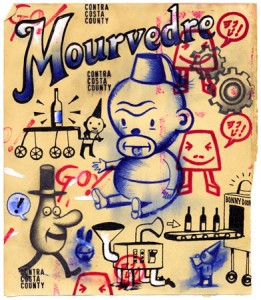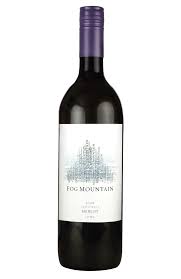October 29th, 2013 § § permalink
After reading Valeria’s post on Coca-Cola, I was intrigued by Coke’s marketing efforts and their new line of green coke in Argentina. I did a little more reading and uncovered that the soda giant has also been pushing a new line of Coca-cola that comes in ice bottles in Colombia. The selling point of these glass bottles is that no waste gets left behind after the soda has been consumed, and the bottle melts away to water.
It appears that Coca-Cola is really making an effort to keep up with the growing social trend of greener consumption. Not particularly well-read or aware of conservation and green consumption trends in Southern America, I decided to try and find more information about the topic. However, nothing substantial came up in my research. Thus, I find it intriguing that Coca-Cola would launch these greener products in regions not particularly well-known for its priorities in green consumption.
Nevertheless, both products seem to be doing pretty well in these markets, reportedly selling almost 300 bottles an hour in Colombia. If Coca-cola has plans to expand this product to other markets, I have no doubt that these greener products would do well in North America where consumers are more active in environmental conservation and green consumption. Furthermore, I am sure that many people will purchase a few bottles of each product out of pure curiosity. I know won’t be able to resist!
October 28th, 2013 § § permalink
Bonny Doon Vineyard, a winery based in Santa Cruz, is well regarded as a pioneer in its industry.
Its remarkable story is an inspiring one in market development.
About twenty years ago, wine had a somewhat grandiose image in North America. Perhaps due to its European origins as well as exorbitant price compared to other types of alcohol. Wine was perceived to be typically consumed by the “cultured” or those of a certain social class. Wine had the image of being a drink you ordered to accompany your $200 steak on a night out.
While wine-makers were able to charge high prices for their wines, their market size was effectively quite limited. The average North American consumer had preference for cheaper and more accessible alcoholic beverages. Wine was deemed too complicated or inaccessible. Red or white? Pinot noir or Chardonnay? It seemed much easier to just grab a beer. Fuss free.
Then along came Bonny Doon and its enigmatic founder, Randall Grahm, who single-handedly deconstructed the “pretentious” and complicated image of wine consumption. Through creative and humorous wine labels and lower prices, he made wine more approachable and accessible to the average everyday American, effectively opening up the market for himself. In addition, Bonny Doon positioned itself in a completely untapped market of everyday Americans who previously did not feel comfortable with wine. It was definitely a risky and bold move on Randall Grahm’s part, but this proved to pay off in the end.

Bonny Doon’s Big House Red Wine

Another of Bonny Doon’s creative wine labels

A conventional bottle of wine
Instead of trying to compete in the already saturated wine industry in California, Grahm was able to identify an opportunity in the market that allowed him to position himself in the industry without facing the existing stiff competition. This probably explains why Bonny Doon was one of the fastest growing wineries in the 90s, experiencing record growth in sales and remains as one of the most well-known wineries in California today.
October 5th, 2013 § § permalink
Ringdingding, apparently.
The above video went viral in September, with over 88 million videos to date. It is a music video, conceptualized and performed by a comedy duo from Norway, Ylvis. Ylvis have claimed that the purpose of the video was to entertain viewers of their talk show in Norway. The video, was by no means, meant to be a marketing tool. However, the video has been extremely successful in generating interest in their talk show all across the globe, particularly in North America.
What intrigued me was the video’s ability to generate interest in Ylvis’s talk show despite it bearing almost no relation or reference to said talk show.
Many organisations spend thousands of dollars on elaborate marketing strategies and advertising tools, in hopes of generating interest in their product or services. A lot of research goes into understanding the behaviour and preferences of target markets, strategies are then formulated over several months, and finally, thousands of dollars spent in execution.With no means to discredit Ylvis… Although I am sure much thought went into producing their video, I am certain that the video was produced without any elaborate research or strategy in mind. And yet, the publicity they achieved is only what many organizations can dream of.
The video, in my opinion, makes no sense albeit raising the interesting question of “what does the fox say?”. But its high entertainment value was extremely successful in capturing the attention of over 88 million views, and subsequently views for their talk show. This is but one example of how pure entertainment value can help generate buzz for one’s brand.
Perhaps Ylvis simply possess a very subtle understanding of today’s audience, and were able to craft this hilarious video to capture our attention.
An intentional promotional tool or not, all I know is the catchy song and video will be stuck in my head for weeks to come, and I am sure I’m not the only one.
October 3rd, 2013 § § permalink
In continuation of last post on using 9-11 as an advertising/ promotional platform, I came across the following video from the New York City Ballet.
In my opinion, it is not all too different from that AT&T tweet. Both made use of 9-11 to promote their products.
However, reaction to the above video was starkly different from that to AT&T’s tweet. Comments on the video called it “moving”, “touching” and “beautiful”. I could not identify a single comment, calling out NYC Ballet for using 9-11 as a platform to promote their company.
It is interesting how consumer perception can vary so drastically in accordance to different forms of branded content. I believe AT&T’s tweet and the NYC Ballet’s YouTube video provide a good contrast, and is an excellent example to all marketing and advertising associates of how a little more thought put into an ad could really make a difference in building or breaking one’s brand.


